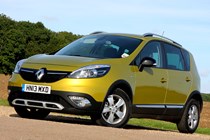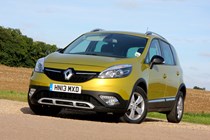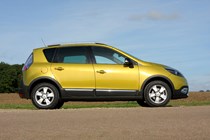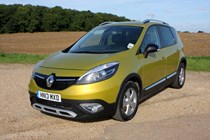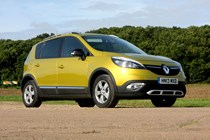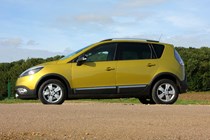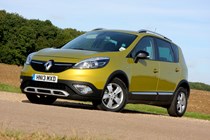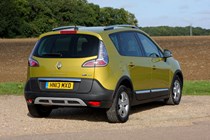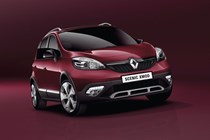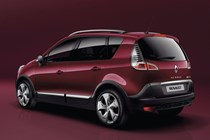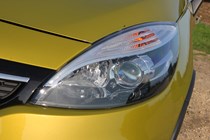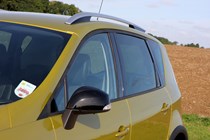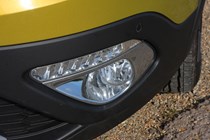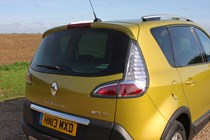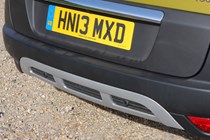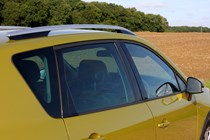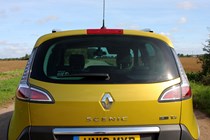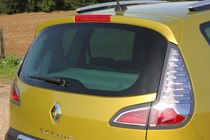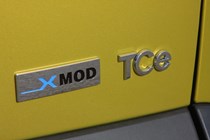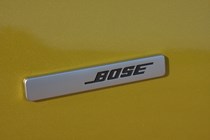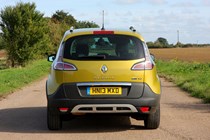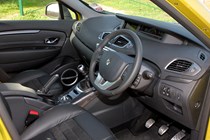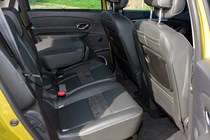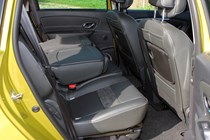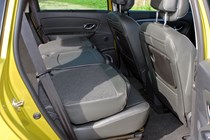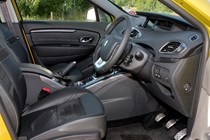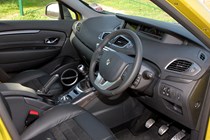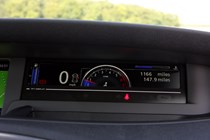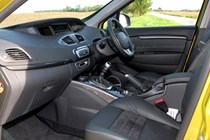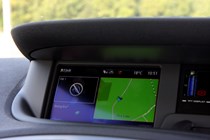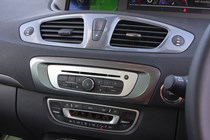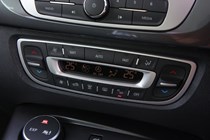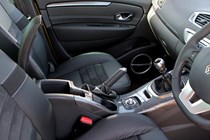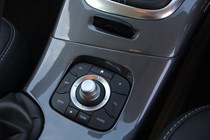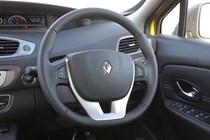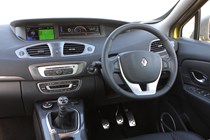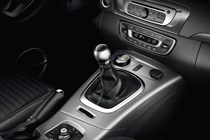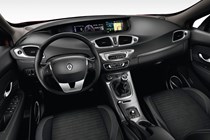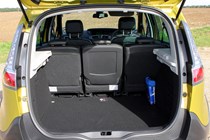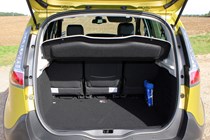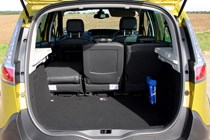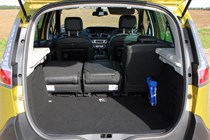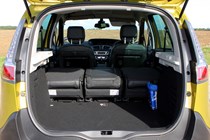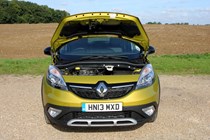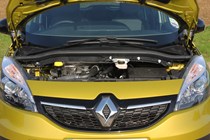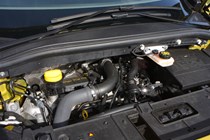
Renault Scenic XMOD (2013-2015) engines, drive and performance
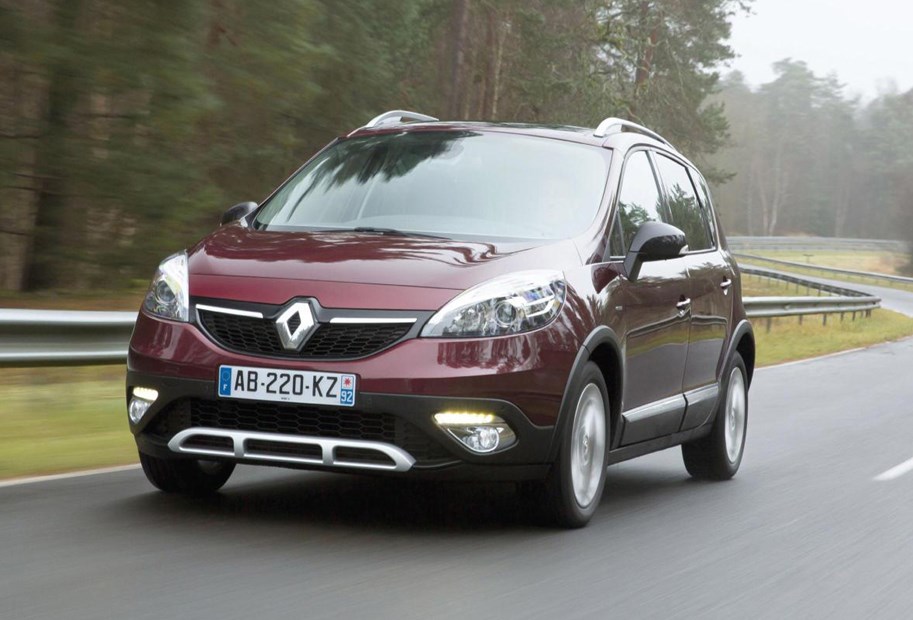
Diesel and petrol versions are offered in the Renault Scenic XMOD engine range, with the former expected to account for the majority of sales. Whether manual or automatic transmission is specified, all gearboxes have six speeds.
Diesel derivatives
There are essentially two diesel engines in the Scenic XMOD range although the smaller of the two is available in three slightly different configurations.
Depending on either trim level or gearbox choice, there are slight differences between XMODs fitted with the 1.5-litre dCi 110 engine.
In entry-level Expression+ specification, mated to a manual gearbox, the engine does without a stop/start system which has a drastic effect on both fuel consumption and CO2 emissions. With 110bhp and 260Nm of torque available from 1,750rpm, it’s still capable of a claimed 61.4mpg, with CO2 rated at 120g/km.
Opt for Dynamique TomTom trim and the 1.5 dCi 110 motor’s available in two different forms. The EDC automatic version does without stop/start but also sees its peak torque figure drop to 240Nm. Economy and emissions are marginally worse than the equivalent manual at 60.1mpg and 124g/km.
Somewhat confusingly, manual-gearboxed Dynamique TomToms with the 1.5 dCi 110 motor are fitted with stop/start. While power and torque figures remain unchanged, it has the best fuel efficiency and CO2 rating of the Scenic XMOD range, at 68.9mpg and 105g/km.
Combining power and frugality is the 1.6-litre dCi 130, only available on the higher trim level. Delivering 130bhp and 320Nm of torque at 1,750rpm, this XMOD is also the fastest in the range, capable of reaching 121mph and dashing to 62mph in 10.3 seconds. Despite this, it’s the second most fuel-efficient XMOD too, with a claimed average of 64.2mpg and CO2 emissions of 114g/km, aided by standard stop/start functionality.
Petrol power
If petrol’s your preferred choice then you can opt for three different engines in the XMOD.
Available on both trim levels is Renault’s familiar 1.6-litre VVT 110 engine, providing the cheapest entry point for XMOD motoring. Delivering just 152Nm of torque at a high 4,250rpm, it’s also the thirstiest and most polluting of the range, at 36.7mpg and 178g/km of CO2.
Using a smaller capacity 1.2-litre turbocharged engine makes more sense but these engines are only available on the more expensive trim level. However, both are fitted with a stop/start system, to boost economy.
Up first is the 1.2-litre TCe 115, which provides similar performance to the 1.6 VVT 110 but with superior fuel efficiency and lower CO2 emissions too. Producing 115bhp and 190Nm of torque at 2,000rpm, Renault nevertheless claims 46.3mpg and 140g/km of CO2.
Completing the range is the higher power 1.2 TCe 130. In addition to 15bhp extra, torque increases to 205Nm, again at 2,000rpm. It’s slightly less green at 44.1mpg and 145g/km of CO2 but Renault suggests the extra power makes overtaking a little easier.
If you’re considering a crossover-style car like the Renault Scenic XMOD handling is unlikely to be near the top of your priorities list. Thankfully, this latest Scenic performs well across a multitude of road types it was sampled on.
Cast thoughts of sportiness aside and enjoy the compliance of the XMOD’s suspension that deals capably with undulations and pock-marked surfaces with ease, whether at higher speeds or around town. The steering wheel might not be especially communicative about what the front wheels are up to but its lightness makes manoeuvring easy and less tiring on longer journeys. Combined with its compact dimensions, the XMOD isn’t remotely difficult to weave through urban traffic jams or wend in tight multi-storey car parks.
Drive the Scenic XMOD with vigour and while it changes direction quickly and accurate, no doubt aided by the grippy nature of the chunkier tyres, the car does lean over as it goes through bends. Drivers and passengers are unlikely to feel disconcerted by this but nevertheless it remains less level than newer rivals.
Renault’s ‘Grip Xtend’ system using the traction control’s electronics to deliver just the right amount of power to the front wheels to deal effectively with the type of surface the car is driving on. It’s not an automatic system like on premium 4x4s, instead there’s a rotary controller in front of the gear lever to allow the driver to switch between ‘Expert’, ‘Road’ and ‘Loose Ground’ modes. There’s a noticeable effect between the settings but don’t mistake it for an alternative to four-wheel drive on rougher terrain.
Primarily, Scenic XMOD buyers are unlikely to feel like they’re piloting something like an unwieldy van. It’s comfortable, quick to respond and pleasant to drive – just don’t expect it to be particularly engagement.


